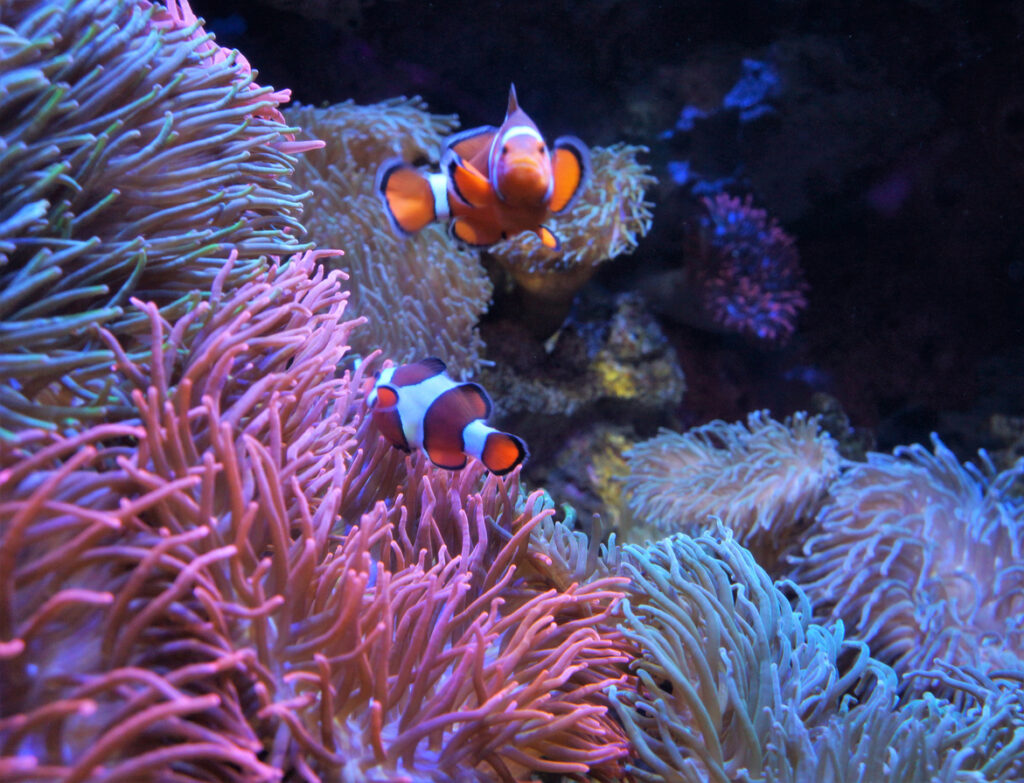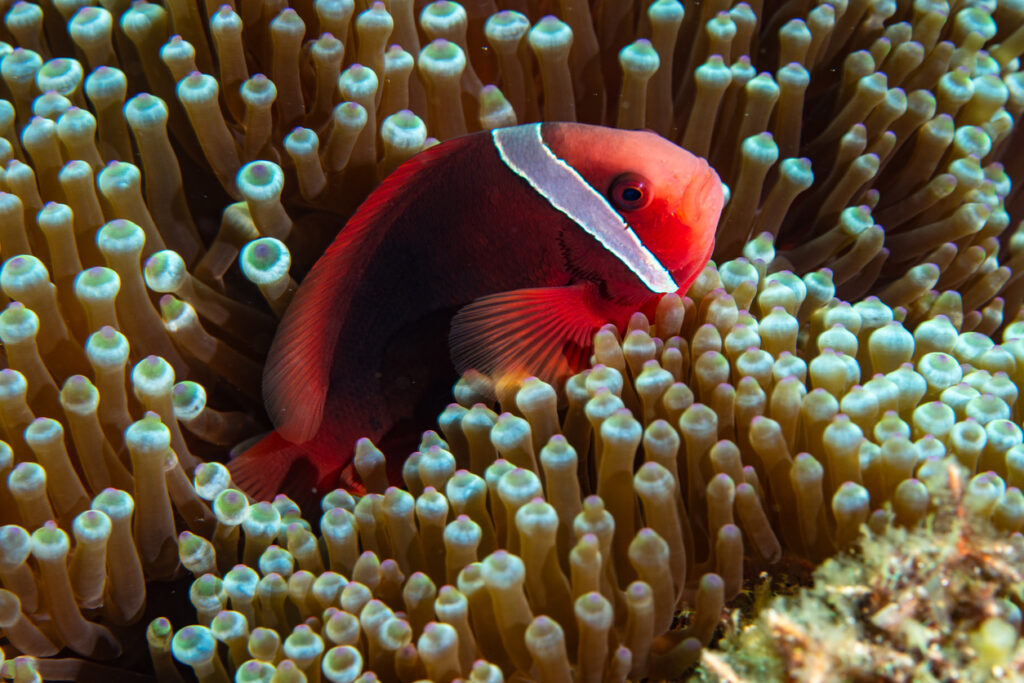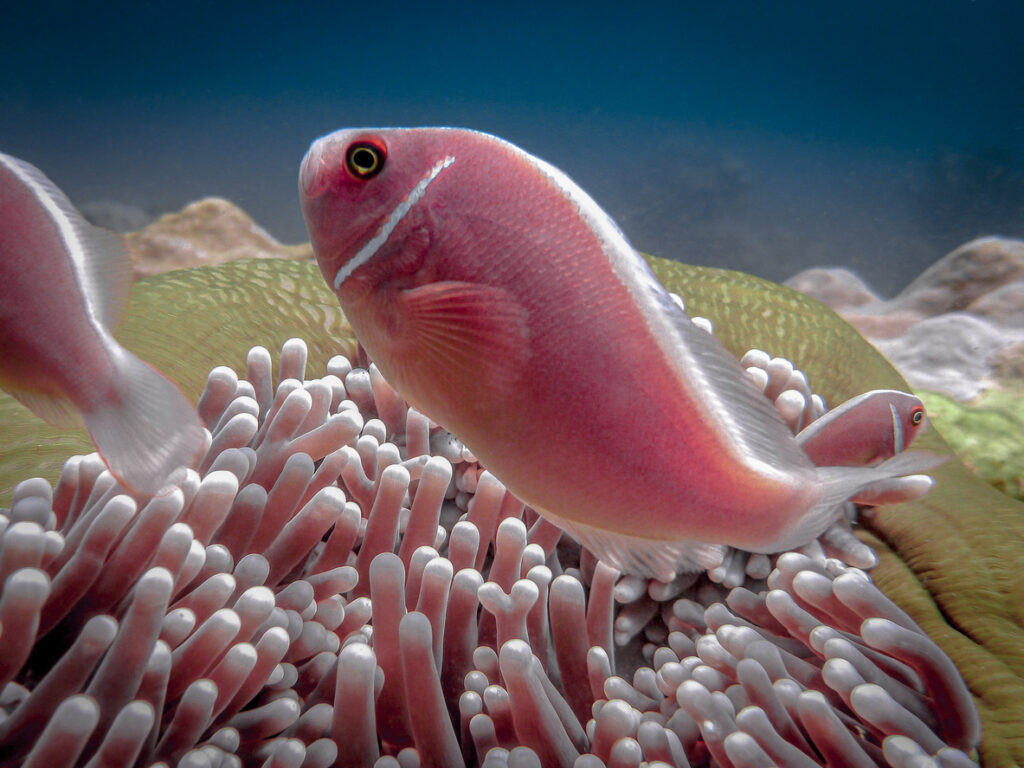Small, colourful and diverse, clownfish are more than just the black, orange and white fish that might be most familiar with. In fact, while you might recognise the clown anemonefish and orange clownfish as the orange fish with white stripes, you might not realise that these are actually different species. There are many variations within clownfish species, which is why we’re here to reveal their unique appearances and varied habitats with you today.
How many species of clownfish are there?
First of all, it’s good to have some basic knowledge of the family that this fish belongs to. Clownfish sit within the Pomacentridae family which also includes damselfish, and they’re also classified as being part of the Amphiprioninae subfamily.
So, how many species of clownfish have been identified? It’s thought that there are around 30 recognised species of clownfish swimming around in waters across the globe. From the pink anemonefish (Amphiprion perideraion) with its peach-pink body to the black, white and yellow sebae clownfish (Amphiprion sebae) commonly found in northern regions of the Indian Ocean, these fish sure are a diverse bunch. Keep your eyes peeled – we’ll be introducing a few more of the individual exciting species later in this blog!
Where do clownfish live?
Most clownfish species live in shallow water across the Indian Ocean, Red Sea and Western Pacific. However, you aren’t likely to find these fish swimming in the Mediterranean or Atlantic Ocean. Because of their symbiotic relationship with anemones (Heteractis magnifica), they tend to prefer living amongst sheltered reefs and lagoons where these sea creatures are most commonly found. This relationship is why they’re sometimes referred to as anemonefish!

Understanding the different clownfish species
With such a wide array of recognised clownfish species, we thought we’d dive deeper into the similarities and differences in their traits, characteristics and habitats.
Common clownfish (Amphiprion ocellaris)
The common clownfish, also sometimes known as the ocellaris clownfish, is commonly mistaken as the orange clownfish because both have orange bodies with white vertical stripes. The trick to telling them apart? The common clownfish has less prominent black bands than the orange clownfish!
This species prefers a saltwater habitat, which is why it’s typically found in the Pacific Ocean and Indian Ocean. At Tynemouth Aquarium, you can spot this species in our Tropical Seas exhibit.
Tomato clownfish (Amphiprion frenatus)

Another clownfish with a primarily orange appearance is the tomato clownfish, although this one has a single distinctive white stripe with strong black markings. On the larger side, growing up to 14cm in length, this species is non-migratory and tends to stick to the lagoon reefs in the Western Pacific on the Gulf of Thailand.
Pacific anemonefish (Amphiprion pacificus)
The Pacific anemonefish stands out from other clownfish with its brown and yellow body, and unlike many other clownfish species, this one has no coloured bands or stripes. This is because the species is classified as a member of the skunk complex, which means that its geographical location, sex and host anemone don’t affect its colour variation. As its name would suggest, it lives in the Pacific Ocean – typically in the western regions.
Pink anemonefish (Amphiprion perideraion)

Also sometimes called pink skunk clownfish, the pink anemonefish lives up to its name with its peach-pink body featuring a single white vertical stripe near its head. This species of clownfish is typically found in brackish waters stretching from Northern Australia to the Southwest Pacific close to Southern regions of Asia. Pink anemonefish are also thought to be one of the smallest species, growing up to just 10cm at full size.
Allard’s clownfish (Amphiprion allardi)
With a striking appearance, the Allard’s clownfish (sometimes known as the twobar anemonefish) is mostly black with two distinctive white stripes and yellow or orange fins and tails. Living in the West Indian Ocean off the coast of East Africa, this species can be differentiated based on habitat in comparison to the nearly identical appearance of the orange-fin anemonefish which can be found in the West Pacific Ocean.
Where to see clownfish for yourself
If you happen to be on holiday anywhere near a coral reef or lagoon in the Indian Ocean or Western Pacific, you might spot these fish out in the wild. Luckily though, there’s no need to travel across the world just to see these creatures – you can simply visit them at Tynemouth Aquarium’s Tropical Seas exhibit!
To meet our common clownfish and many other exciting sea creatures, book your tickets today.
